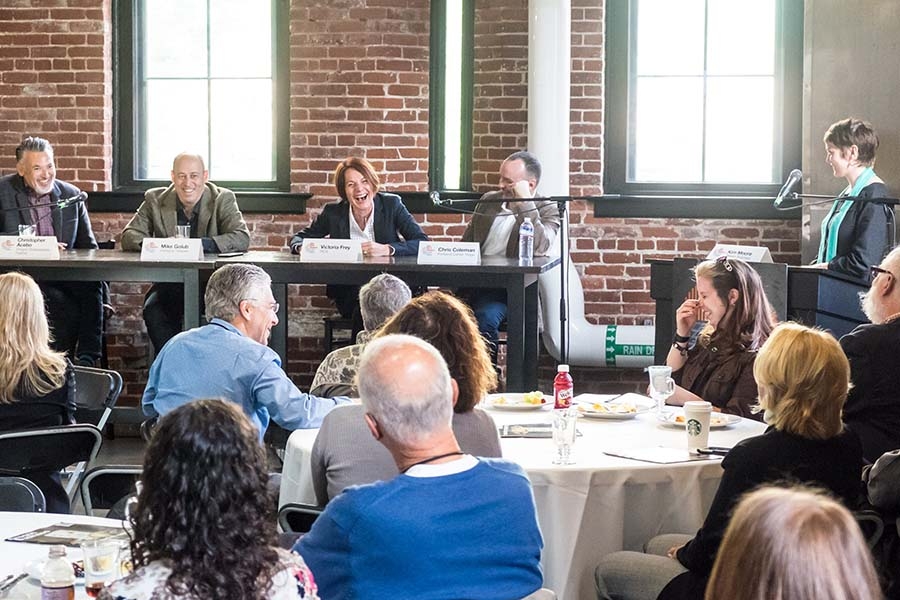How can performing arts organizations capitalize on Portland’s new gilded age? A group of arts leaders talked about how to cultivate a new generation of tech donors during an Oregon Business panel discussion held at the Portland Armory this morning.
“The key is figuring out what the win is for tech company investing in an arts organization,” said Portland Center Stage artistic director Chris Coleman. Traditional donors like U.S. Bank contribute in order to reach potential customers, he said. “With a tech company, the audience is less clear. So the question we have to figure out how to answer is: What is in it for them?”
For now, arts organizations are using a traditional approach based on building individual relationships with donors, said Victoria Frey, executive director of PICA. “But most arts organizations have yet to see new players in the game,” she said. “It’s a work in progress.”
Chris Acebo, associate artistic director of the Oregon Shakespeare Festival, opined that startups have yet to mature as philanthropic givers. “The millennial philanthropy that we do see is complicated. They want to know where their money is going; it’s data driven, and that’s not necessarily the thing arts groups do best.”
Acebo said OSF has tried to involve tech companies in programming and artistic creation: e.g. a tech company recently fashioned the laser fabric for an OSF performance.

Mike Golub, president of business for the Timbers and vice chair of the Oregon Cultural Trust, said new economy software firms struggle for talent and that the arts organizations can sell companies on the value of the arts as a recruitment and retention tool.
The panelists also discussed creative ways of attracting young, device-obsessed millennials. Frey said PICA had put up a couple of profiles on Tinder aimed at luring young people to performances. She laughed: “We’ve done Grinder too. Maybe we won’t do that one again.”
Portland arts organizations employ 8,500 people and have a $250 million impact, said Golub. But that isn’t enough. “There is great energy in the new economy, start ups, that hasn’t translated into giving for the arts,” he said. “It’s a collective challenge we all face.”



